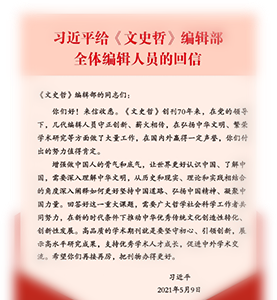新见考古资料证明,东汉时期以浮屠等同黄老因而黄老浮屠同祀的现象,应是老子化胡说流行的结果;新发现的山东费县潘家疃东汉墓门上鸟喙老子与胡人浮屠及窣堵坡组合画像、山东兰陵九女墩汉墓辟邪石兽立柱画像所呈现的“黄老”信仰与胡人浮屠组合皆堪与证。史乘所述黄老浮屠同祀现象,不为后人所解,个中原因除了儒生史家语焉不详,更多是由于时人所信老子化胡说,以老子浮屠为同一人在不同时空之“化形”,因而将老子浮屠等同且一同祭祀。某些汉墓中黄老浮屠画像一同出现,正是中国思想史和宗教史上这种奇特信仰的图像呈现。新发现的山东微山县东汉画像石椁残石和陕北汉墓画像石则表明,东汉已有佛教地狱信仰在华传播。此类有关东汉佛教传播的墓葬画像资料之发现与认知,亦有助于早期汉译佛经译介时间之断代和汉文化生态变迁问题研究。
A Study of the Han Tomb Images of the Avīci Hell and Laozi’s Conversion of the Barbarians
Jiang Sheng
Newly excavated archaeological materials now verify the historical phenomenon of the equaling of Huang-Lao (Laozi) and Buddha and the comingled sacrificing to Huang-Lao. The emerging Eastern Han conception of the historical Buddha was a result of the prevailing belief of Laozi’s conversion of the barbarians. The collected images of the Bird-beaked Laozi, the “barbarian” Buddha, and the arch-shaped stupa recently found in Panjiatuan Village of Fei county in Shandong province, in combination with the assembled pictures of the Huang-Lao belief and the “barbarian” Buddha on the surface of stone pillar from the Jiunüdun Han tomb in Lanling county of Shandong province provide strong evidence of the commingling of these traditions. In addition to the Confucian historians’ unclear records, the misunderstanding of the historical records on the mingled sacrificing to Huang-Lao and Buddha was mainly formed from a largely unrecognized structure of Han belief: Laozi transformed himself into Buddha, and then emerged in different contexts and “converted the barbarians”. Thus, Laozi and the historical Buddha are viewed as the transformative appearances of one person. In some Han tombs, the illustrations of Laozi and Buddha appear together, which is a very unique belief in the Chinese history of religious doctrine and institution. At the same time, this article reveals that in the newly found Han coffin stone pictures from Weishan county of Shandong province, and in the Han tomb stone pictures from northern Shanxi province, one can find pictorial evidence of the earliest Chinese perception of the Buddhist belief in the Avīci Hell. All these new findings and analyses of Buddhist views in Eastern Han tomb art also contribute to understanding the compositional context of early Chinese translations of Buddhist sutras and the study of changes in the Han cultural ecology.


